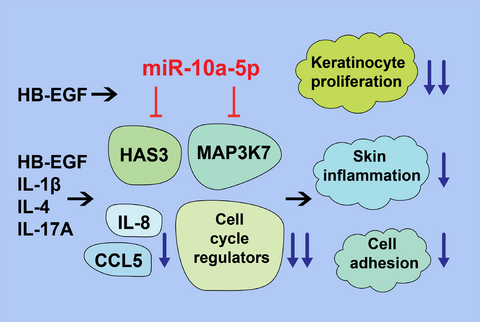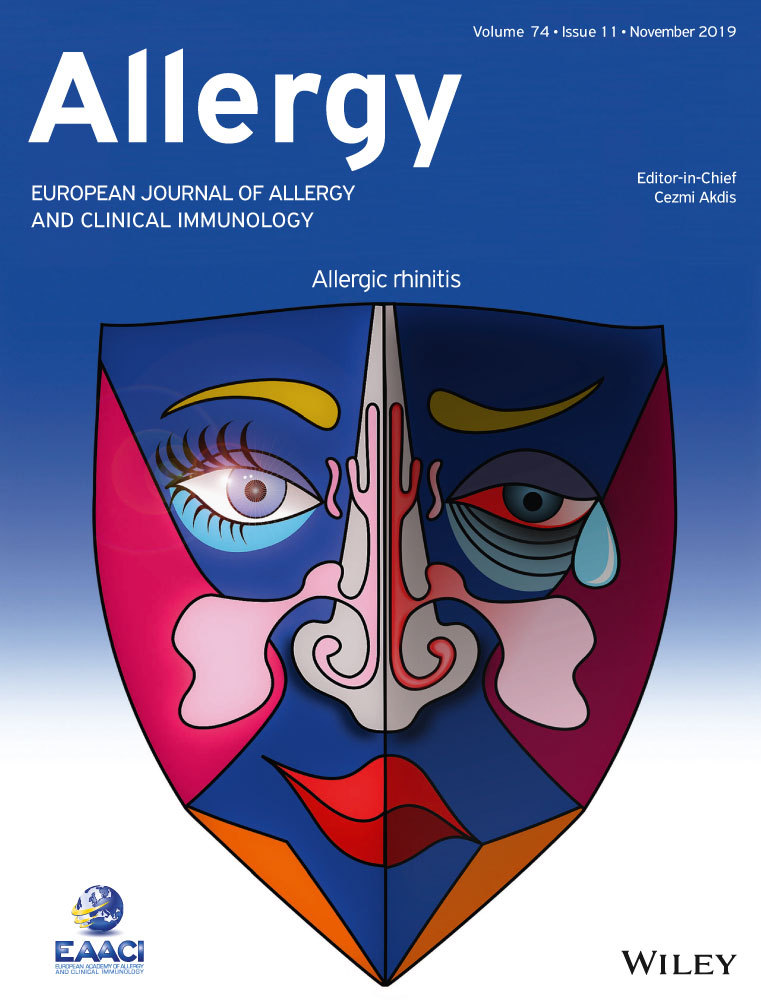miR-10a-5p is increased in atopic dermatitis and has capacity to inhibit keratinocyte proliferation
Funding information
This work was supported by European Union through the European Regional Development Fund (Project No. 2014-2020.4.01.15-0012) and Research capacity building through improved knowledge exchange and twinning frameworks for the Centre of Excellence in Translational Medicine (1.01.2016−31.12.2018), Estonian Research Council grants (IUT20-60, PUT1669, PUT1465, MOBJD106) and grants from Leo Foundation (LF17040), the Christine Kühne-Center for Allergy Research and Education (Davos, Switzerland), NIH (K12 CA090625) and Department of Veterans Affairs Clinical Sciences R&D (CSRD) Service Career Development of the United States (Award Number IK2 CX001785).
[Correction added on 11 June 2019, after first online publication on 02 May 2019: the affiliation of author Eric R. Tkaczyk has been corrected in this version].
Abstract
Background
miR-10a-5p has been shown to regulate cancer cell proliferation and invasiveness and endothelial cell inflammatory responses. The function of miR-10a-5p in the skin has not been previously studied. The aim of the current study was to examine miR-10a-5p expression, regulation, and function in keratinocytes (KCs) in association with atopic dermatitis (AD).
Methods
The expression of miR-10a-5p and its target genes was analyzed using RT-qPCR, mRNA array analysis, in situ hybridization, and immunofluorescence. The transfection of miRNA mimics, cell cycle distribution analysis, and luciferase assays was used to study miR-10a-5p functions in human primary KCs.
Results
miR-10a-5p was found to be upregulated in lesional skin from patients with AD and in proliferating KCs. Array and pathway analysis of IL-1β-stimulated KCs revealed that miR-10a-5p inhibited many genes that affect cell cycle progression and only a few inflammation-related genes. Accordingly, fewer cells in S-phase and reduced proliferation were detected as characteristics of miR-10a-5p-transfected KCs. The influence of miR-10a-5p on cell proliferation was also evident in KCs induced by AD-related cytokines, including IL-4, IL-17, and IL-1β, as measured by the capacity to strongly suppress the expression of the proliferation marker Ki-67. Among AD-related putative direct target genes, we verified hyaluronan synthase 3, a damage-associated positive regulator of KC migration and proliferation, as a direct target of miR-10a-5p.
Conclusions
miR-10a-5p inhibits KC proliferation and directly targets hyaluronan synthase 3 and thereby may modulate AD-associated processes in the skin.
Graphical Abstract
The expression of miR-10a-5p is increased in the skin of patients with atopic dermatitis, in proliferating keratinocytes, and in response to growth factor heparin-binding EGF-like growth factor. miR-10a-5p has capacity to inhibit keratinocytes proliferation, the expression of mitogen-activated kinase 3 kinase 7 and hyaluronan synthase 3, pro-inflammatory chemokines IL-8 and CCL5, and numerous genes affecting cell cycle progression. miR-10a-5p inhibits proliferation and to less extent the inflammation and cell adhesion of keratinocytes and thereby may affect the development and severity of atopic dermatitis.
CONFLICTS OF INTEREST
The authors declare that they have no conflicts of interest.





